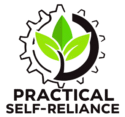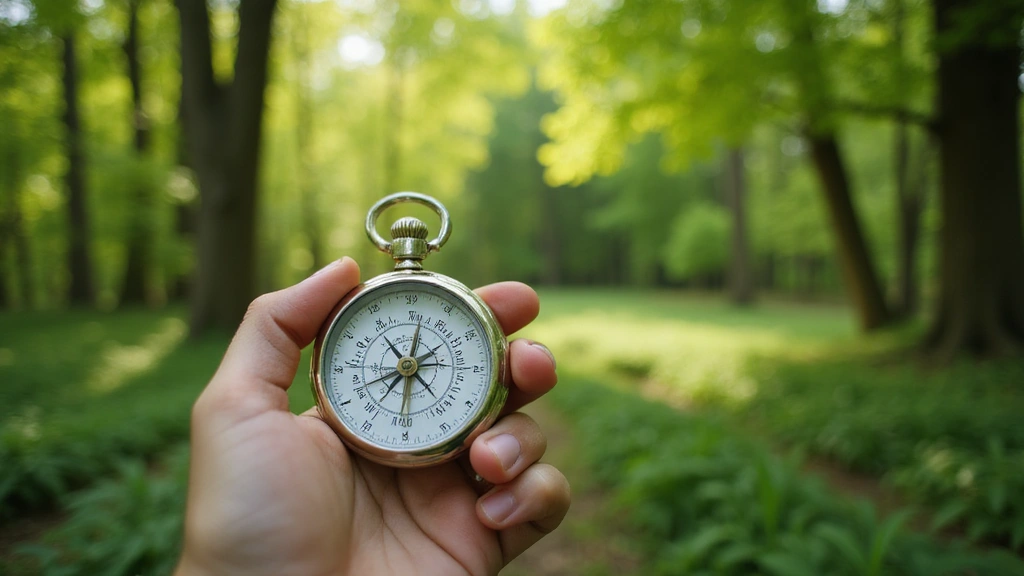Unlock the adventure within you and step into the great outdoors with the ultimate guide to compass basics!
Orienteering isn’t just about navigating; it’s a thrilling mix of exploration, strategy, and fun. Imagine wandering through a lush forest, the crisp air filling your lungs as you confidently rely on the needle of your compass to guide you toward hidden treasures among the trees. With countless trails to explore and new skills to learn, mastering the art of orienteering can elevate your outdoor fun to a whole new level.
Whether you’re a seasoned adventurer or just starting out, this guide will cover 13 exciting ways to use a compass, describing each step along the path to becoming an orienteering expert. Let’s dive into the adventure and discover how compass basics can lead you to unforgettable experiences!
Contents
- 1. Understanding Your Compass
- 2. Setting a Bearing
- 3. Using Landmarks
- 4. Combining Compass With Maps
- 5. The Art of Pacing
- 6. Navigating with a Team
- 7. Embracing Technology
- 8. Night Navigation
- 9. Learning from Mistakes
- 10. Orienteering Courses and Challenges
- 11. Wildlife Safety During Orienteering
- 12. Finding Hidden Geocaches
- 13. The Adventure Continues!
1. Understanding Your Compass
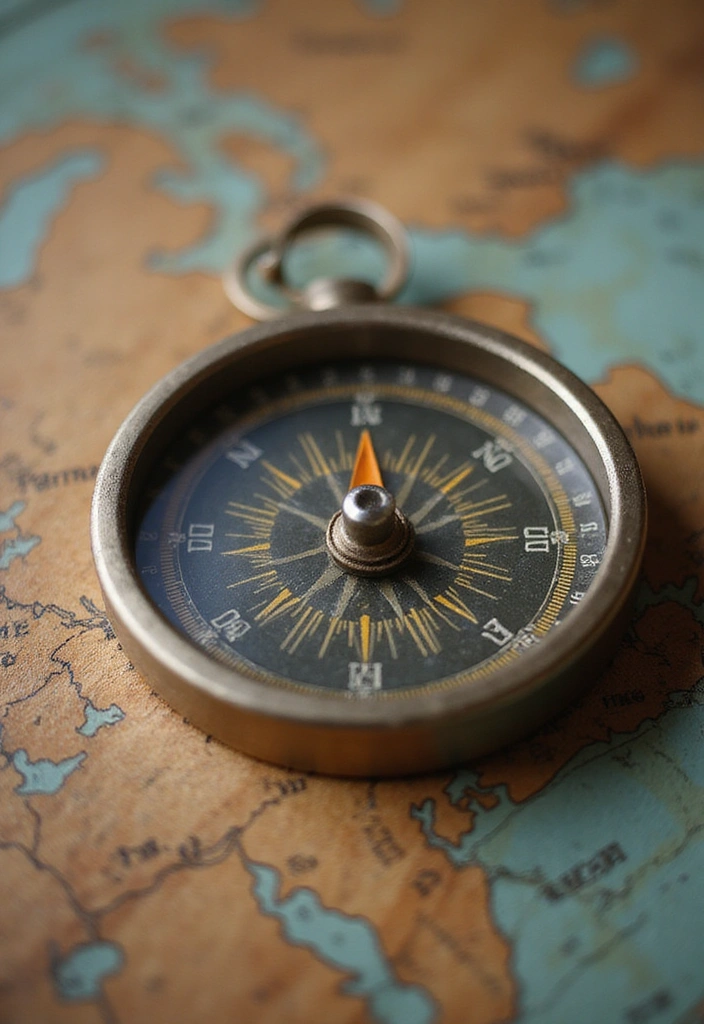
Before you embark on your adventure, it’s crucial to get familiar with your compass. At first glance, it might seem like a simple tool, but there’s more to it than meets the eye. A typical compass consists of a magnetic needle, a rotating bezel, and a baseplate. The needle always points towards magnetic north, while the bezel helps you to take bearings.
Here are some key points to grasp:
– **Magnetic North vs True North**: It’s essential to know the difference! Magnetic north is where the compass points, while true north is the geographical North Pole.
– **Using the Bezel**: This rotates to set your desired bearing, which you can then follow. A great option for this is the Silva Ranger Compass, which is user-friendly and reliable for both beginners and seasoned navigators.
– **Baseplate Features**: They often have a ruler for measuring distances on a map. For this purpose, consider the Suunto MC-2 Compass, known for its precision and advanced features that aid in accurate navigation.
Understanding these basics makes it easier to navigate, especially when you hit the trails. Additionally, for those who want to enhance their map reading skills, the National Geographic Map Reading and Land Navigation Skills book is invaluable. It complements your compass knowledge and can significantly improve your overall orienteering experience.
2. Setting a Bearing

Setting a bearing is one of the most vital skills to master when using a compass. It’s about determining the direction you want to go, which can be the difference between wandering aimlessly and reaching your destination. Start by aligning the compass with a known landmark or direction on your map. Here’s how to do it:
– Align the Compass: Place the compass flat and rotate the bezel until the desired bearing aligns with the index line. A great tool for this task is the Silva Ranger Compass, which features a clear and easy-to-read layout to help you set your bearings accurately.
– Locate Magnetic North: Turn your body until the magnetic needle aligns with the north marking on the compass. For those venturing into more remote areas, consider the Suunto MC-2G Global Compass, designed for professionals and serious hikers. It offers superior accuracy and global orientation, ensuring you stay on the right path no matter where you are.
– Follow the Direction: Move in the direction of the arrow, keeping the needle aligned. To enhance your navigation experience, having an accurate map is essential. The National Geographic Adventure Map for the Pacific Northwest can provide valuable context to your journey, making it easier to set bearings and reach your intended destination.
By practicing this skill with the right tools, you’ll find yourself confidently navigating through varied terrains.
3. Using Landmarks
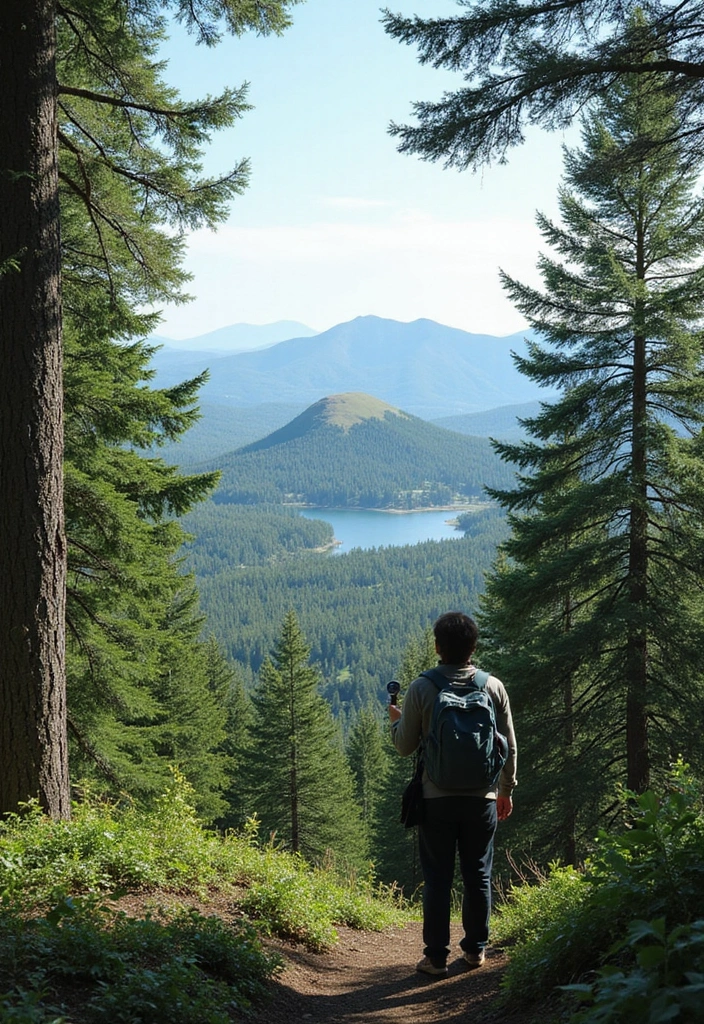
Landmarks serve as your natural GPS!
When orienteering, identifying and using landmarks can greatly boost your navigation skills. This method is particularly useful in dense forests or unknown terrains. Here’s how to make the most of your surroundings:
– **Identify Key Features**: Look for identifiable structures like lakes, hills, or buildings. Having a quality compass on hand, such as the Silva Ranger Compass, can help you accurately determine your direction based on these features.
– **Relate to Your Map**: Use these features to orient your map and plot your course. To enhance your navigation, consider using the National Geographic topographic map, which offers detailed information about the terrain and can assist you in finding landmarks more effectively.
– **Keep a Mental Note**: As you move, continuously check for visible landmarks that keep you on track. Additionally, a handy resource like Basic & Primitive Navigation: a Folding Guide to Wilderness Skills & Techniques can provide tips and techniques to enhance your observational skills in the field.
– **Set Micro-Bearings**: If needed, set small bearings between landmarks to maintain your direction. The combination of your compass and map will ensure you stay on course as you explore.
This technique not only enhances your navigation but also helps you appreciate the beauty of nature while you explore.
4. Combining Compass With Maps
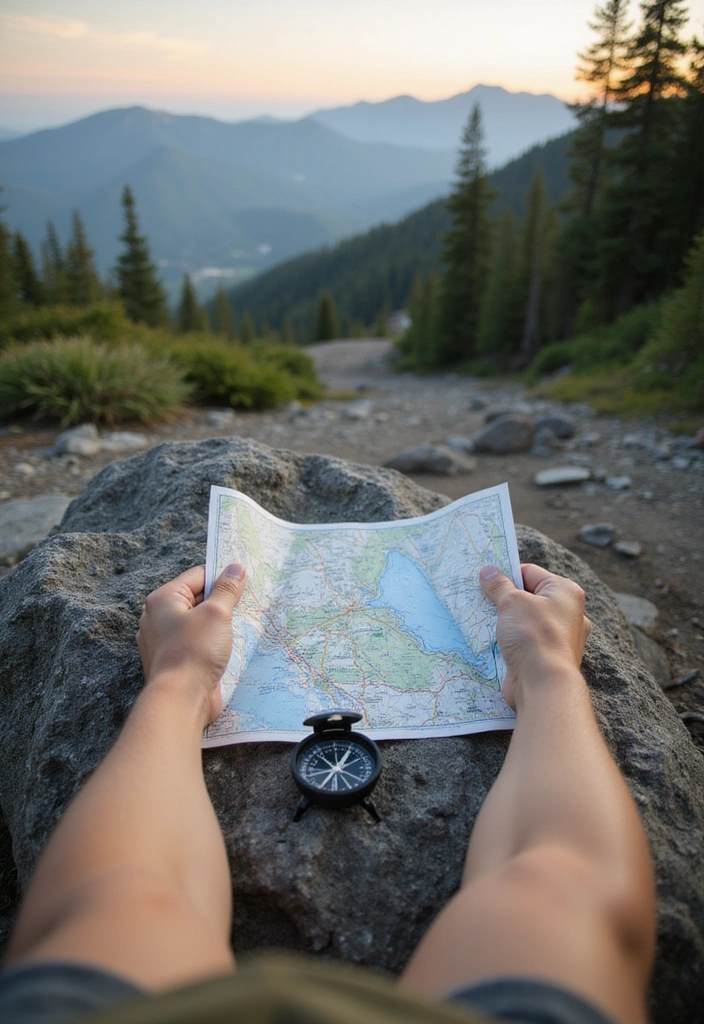
A compass and a map make the perfect duo for any adventurer!
Using both tools in tandem can significantly enhance your orienteering skills. Start by laying your map flat and orienting it with your compass. This means aligning the map’s north with magnetic north using your compass, such as the Silva Ranger Compass, which is known for its reliability and ease of use.
To navigate effectively:
– Translating terrain: Use the map to identify trails, elevations, and other significant features. The National Geographic Adventure Map is a great choice for exploring the Pacific Northwest, providing detailed information that can help you plan your adventure.
– Planning your route: Mark your start and end points, and draw a clear path considering any obstacles.
– Measuring distance: The scale on your map is essential for estimating the distance for your journey. You might find the Map Measuring Tool particularly useful, as it offers 19 built-in user scale factors and can measure distances in miles, kilometers, and nautical miles with ease.
The combination of map and compass not only adds precision to your navigation but also deepens your relationship with the landscape you’re exploring.
5. The Art of Pacing
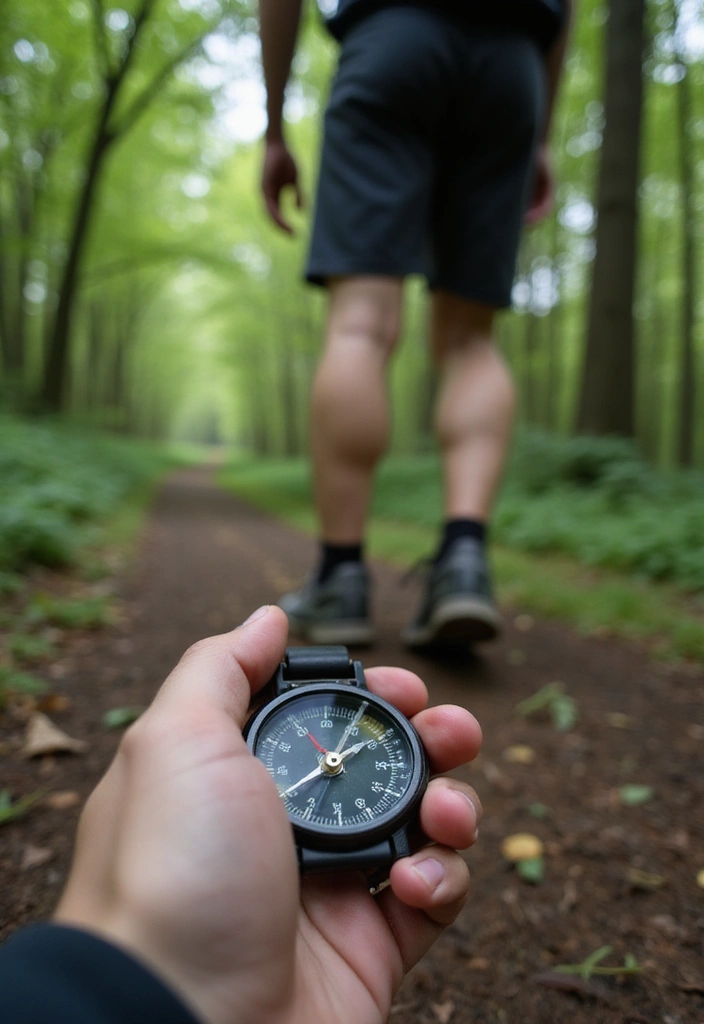
Pacing is a crucial part of orienteering that helps you measure distance on foot. By knowing your pace count, you can estimate how far you’ve traveled and how much further you need to go. Here’s how to master the art of pacing:
– **Determine Your Pace Count**: Count how many steps it takes you to walk 100 meters, then use this number for calculations. A helpful tool for this is a step counter or pedometer, which can accurately track your steps and help you find your average pace.
– **Using Markers**: As you travel, mark every 100 meters based on your pace count. If you want a fun way to keep track of these distances, consider using pacing beads. These handy tools can serve as a visual reminder and make it easier to keep track of your distance.
– **Stay Consistent**: Try to maintain a steady speed to get an accurate count. A reliable compass, like the compass with pacing features, can help you stay oriented and focused on your pace, particularly in unfamiliar terrain.
Mastering pacing helps you keep track of your distance, which can be essential in dense areas where features may not be visible. With the right tools, you’ll be well-equipped to navigate any environment!
6. Navigating with a Team

Orienteering can be even more fun when you navigate with friends. Navigating as a team helps everyone learn and brings a sense of camaraderie to the journey. Here’s how to work together effectively:
– **Assign Roles:** Designate who will lead navigation while others can keep an eye on landmarks. A reliable tool like the Silva Compass can help the designated leader stay on track with confidence.
– **Communicate Clearly:** Make sure everyone understands the route and any changes in direction. Using two-way radios can enhance communication, ensuring everyone stays in sync, especially in areas where visibility may be limited.
– **Share Responsibilities:** Take turns leading, so everyone gets a chance to hone their skills. Keeping your maps dry is essential, and a map case for hiking can help protect your navigational tools, allowing for smooth transitions as team members switch roles.
Exploring together not only makes the process more enjoyable but also fosters teamwork, allowing everyone to contribute to the adventure.
7. Embracing Technology
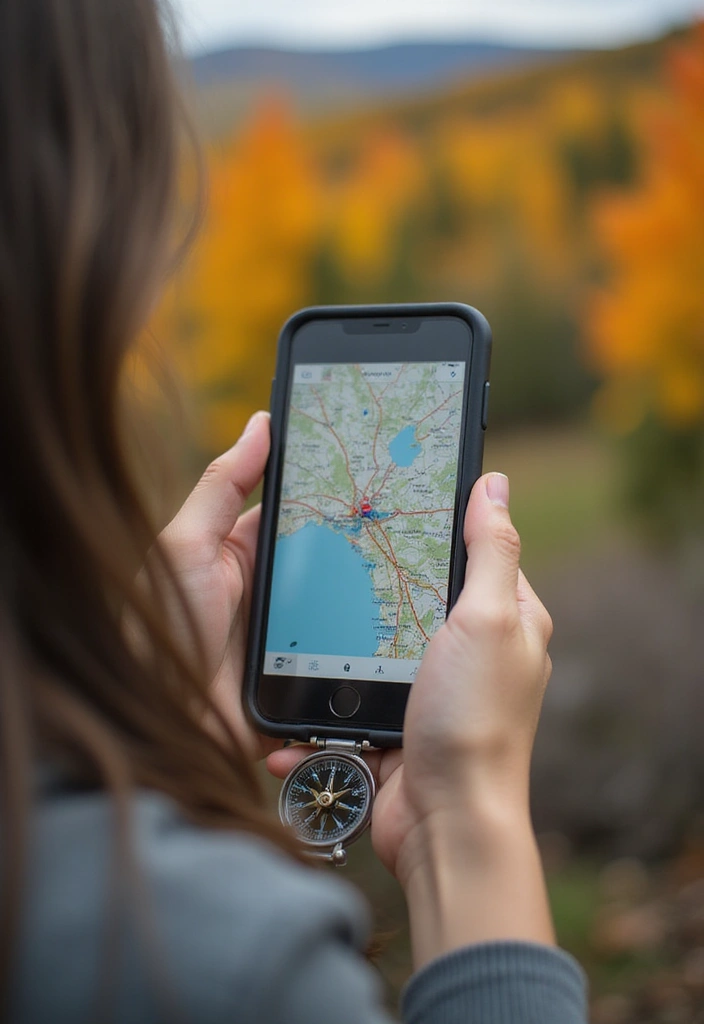
While traditional compasses and maps are fantastic, incorporating technology can elevate your orienteering experience.
Smartphone apps and GPS devices provide real-time feedback and ease of use, making navigation more accessible. Here’s how to blend technology with classic navigation:
– Use Navigation Apps: Download apps like Offline Maps Worldwide Free that offer offline maps and GPS tracking for those remote areas. This way, you can confidently explore without worrying about losing signal.
– GPS vs Compass: Utilize a device like the portable GPS device for broader navigation and revert to your traditional compass for precise direction when needed. The GPS provides spoken turn-by-turn directions, making it easier to focus on the journey rather than constantly checking your map.
– Share and Compare: Use technology to share locations with friends or compare routes after your adventure. With a smartphone with GPS capabilities, you can easily communicate your location, track your progress, and even take photos to document your experience.
The combination of technology with traditional techniques gives you a broader skill set for navigating the great outdoors.
8. Night Navigation

Navigating at night can be a thrilling yet challenging experience. Mastering this skill requires a different approach to using your compass. Here’s how to navigate safely under the stars:
– Use a headlamp: Keeping your hands free is essential for effectively using your compass, and a reliable headlamp like the LHKNL headlamp flashlight offers adjustable brightness and multiple modes to suit your needs.
– Know your surroundings: Familiarizing yourself with the area during the day can make night navigation easier. This preparation lays the groundwork for a more confident nighttime exploration.
– Follow the stars: If you’re in an open area, celestial bodies can serve as guides alongside your compass. Consider using a star chart or astronomy guide to enhance your understanding of the night sky. This can help you identify constellations and navigate with greater ease.
Night navigation adds an adventurous twist to your outings, allowing you to experience nature in a whole new light. Don’t forget to carry a sturdy compass like the 1985 carabiner compass, which is essential for accurate direction-finding when the sun goes down. With the right tools and knowledge, your nighttime adventures will be both safe and exhilarating.
9. Learning from Mistakes
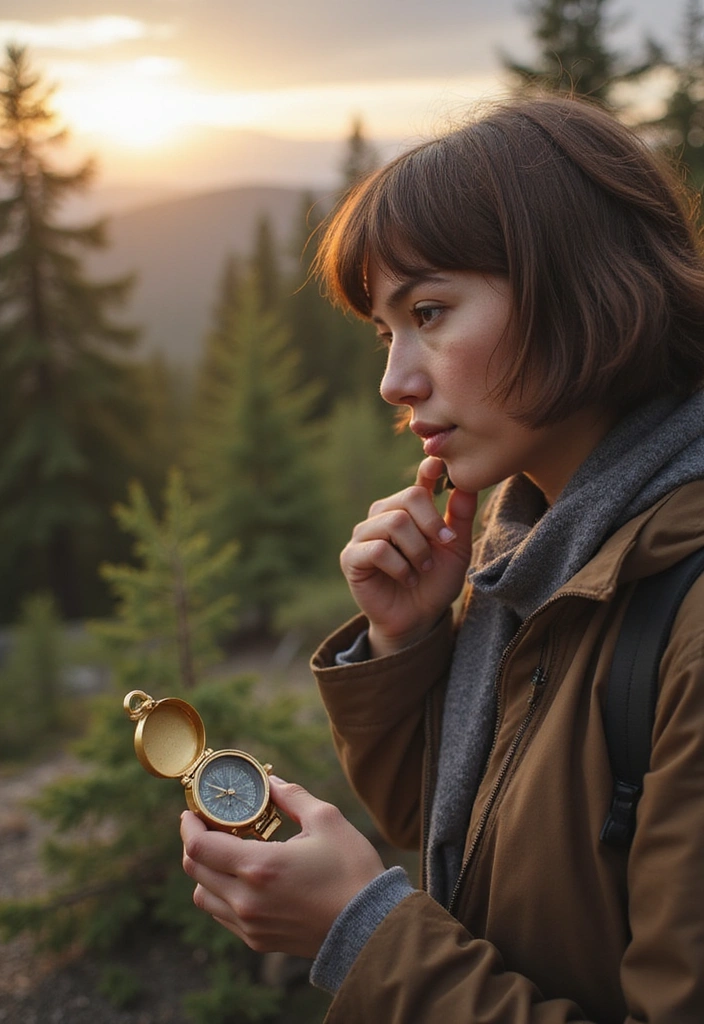
Mistakes are part of the learning process in any adventure, especially when orienteering. Every misstep teaches you valuable lessons and hones your skills. Here’s how to turn mistakes into learning opportunities:
– **Reflect on Errors:** After your adventure, take some time to think about what went wrong and what could have been done differently. This reflection is crucial for improvement. Utilizing a reliable basic compass can help you gain confidence in navigation, making it easier to identify and understand your mistakes.
– **Practice Makes Perfect:** Frequent practice helps make your skills second nature, reducing future errors. To enhance your understanding of navigation techniques, consider picking up the orienteering map and compass guidebook. It’s a great resource that complements your practice sessions and deepens your knowledge.
– **Share Experiences:** Discussing your adventures with others can provide new insights and tips. Sharing a compass practice kit with friends allows for collaborative learning, letting everyone benefit from each other’s experiences.
Remember, every seasoned navigator has faced miscalculation! It’s all part of your journey toward becoming an orienteering expert.
10. Orienteering Courses and Challenges
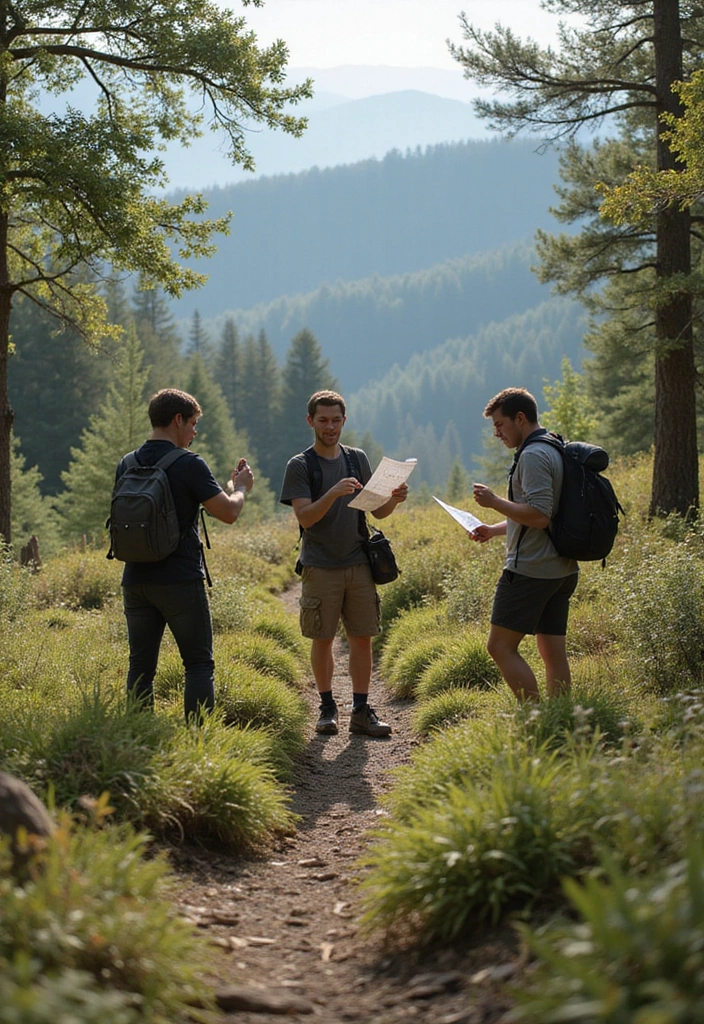
Engaging in orienteering courses can sharpen your skills and build confidence. These courses are designed to test your abilities and improve your navigation techniques in a structured setting. Here’s how to get involved:
– **Join Local Events**: Look for community events or clubs that host orienteering challenges. Participating in these events not only boosts your skills but also creates a fantastic opportunity to network with fellow enthusiasts.
– **Practice under Pressure**: These courses often present timed tasks, helping you think quickly and adapt. To prepare, consider using a reliable tool like the Silva Ranger Compass. This compass is designed for precision and ease of use, enabling you to navigate confidently.
– **Network with Others**: Join fellow orienteers to learn best practices and share experiences, creating a sense of community. You might also want to enhance your knowledge with resources like the Outdoor Navigation Skills Book. This guide offers valuable insights into using natural clues for navigation, which can be especially beneficial during courses.
Participating in these courses can transform your navigation skills from casual to expert, while also being a lot of fun. Plus, don’t forget to equip yourself with a good map, such as the National Geographic Adventure Map of the Pacific Northwest, to help you familiarize yourself with the terrain and enhance your overall experience.
11. Wildlife Safety During Orienteering
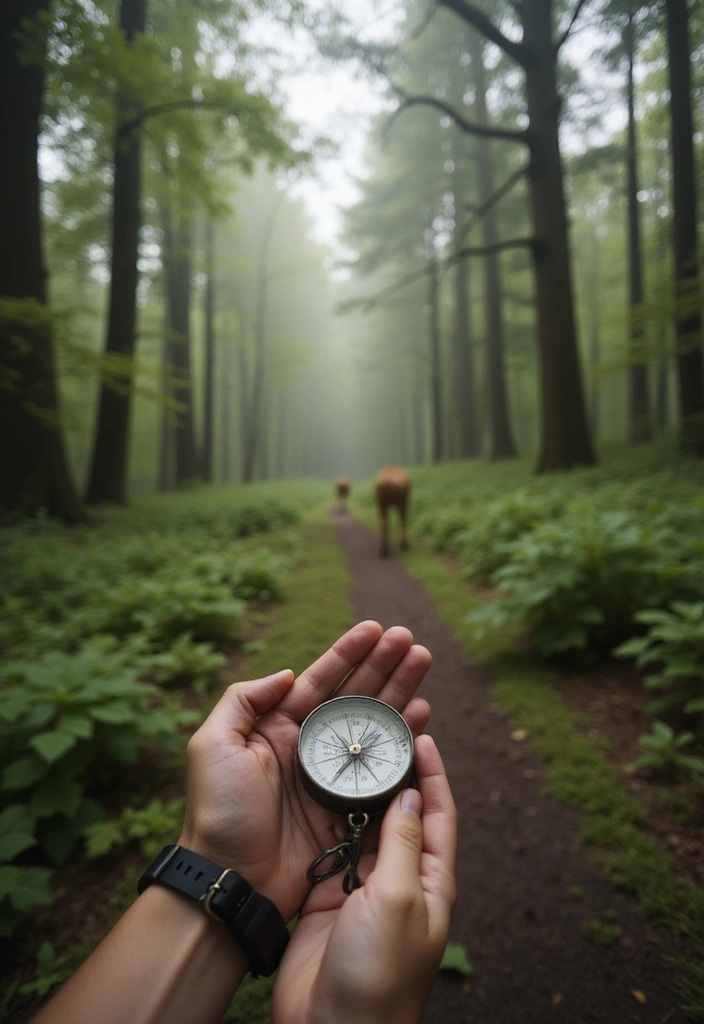
When exploring the wilderness, keeping yourself safe from wildlife is crucial. Being aware of your surroundings not only helps you navigate but also protects you from potential encounters. Here are some tips:
– **Know local wildlife:** Be aware of the animals in your area and how to react if you see one. This knowledge can greatly enhance your confidence and preparedness.
– **Make noise:** Talking or clapping can often alert animals of your presence, encouraging them to keep their distance. To aid in this, consider carrying an wildlife safety whistle. This compact, loud whistle can be a valuable tool for signaling your presence without exerting too much energy.
– **Stay calm:** If you encounter wildlife, remain calm and quietly back away. It’s also wise to have a plan for emergencies. A portable first aid kit is essential for any outdoor adventure, allowing you to manage minor injuries on the spot.
In areas with larger animals, such as bears, it’s beneficial to carry protection. The Bear Spray can provide peace of mind with its maximum strength formula and a 40 ft range, ensuring you have a defensive option if needed.
Safety should always be a priority during your adventures, allowing you to fully enjoy the beauty of nature.
12. Finding Hidden Geocaches
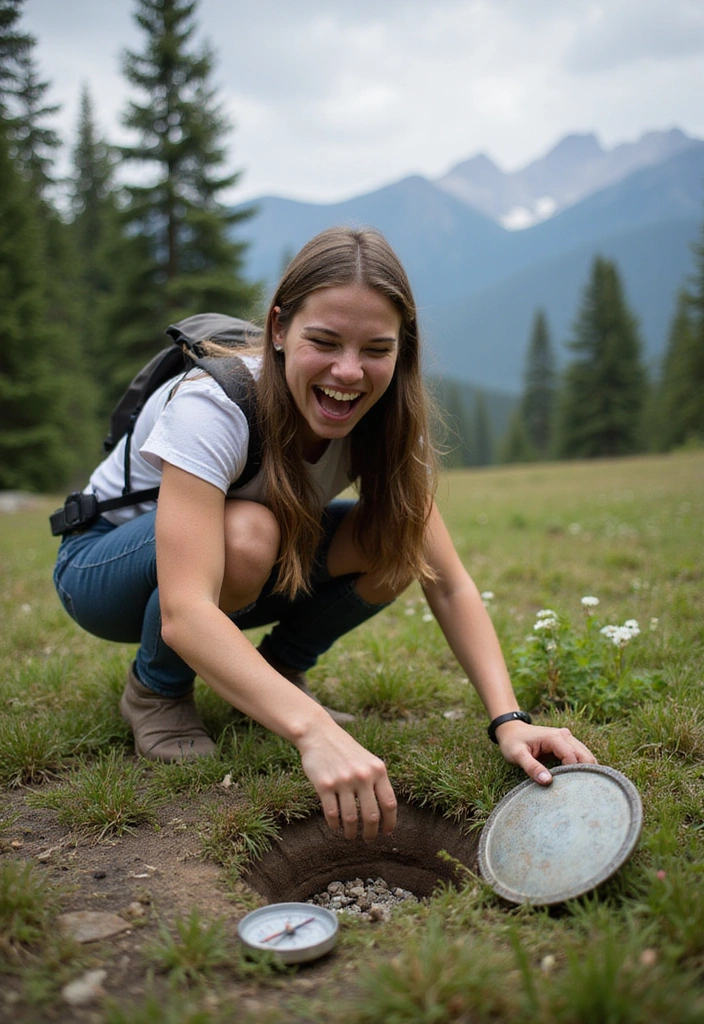
Combine your compass skills with the treasure hunt thrill of geocaching!
Geocaching is a fun activity where participants use GPS coordinates to find hidden containers or ‘caches’ placed by others. Here’s how to get started:
– **Register on Geocaching Sites**: Join websites or apps that list nearby caches.
– **Follow Coordinates**: Use your compass, like the TurnOnSport orienteering compass, to track down each cache based on the provided coordinates. This advanced scout compass is perfect for hiking, camping, and backpacking, helping you navigate with ease.
– **Leave Something Behind**: Geocaching etiquette suggests you take something from the cache and leave something in return.
To enhance your geocaching experience, consider using a geocaching kit that includes supplies and trinkets for trading. This kit will ensure you’re well-equipped for the adventure and can leave behind interesting items for future finders.
For those who prefer a little more tech, a portable GPS device can provide reliable navigation with its latest maps and real-time directions, making it easy to find those elusive caches.
This activity not only enhances your orienteering skills but also adds excitement to your outdoor adventures!
13. The Adventure Continues!
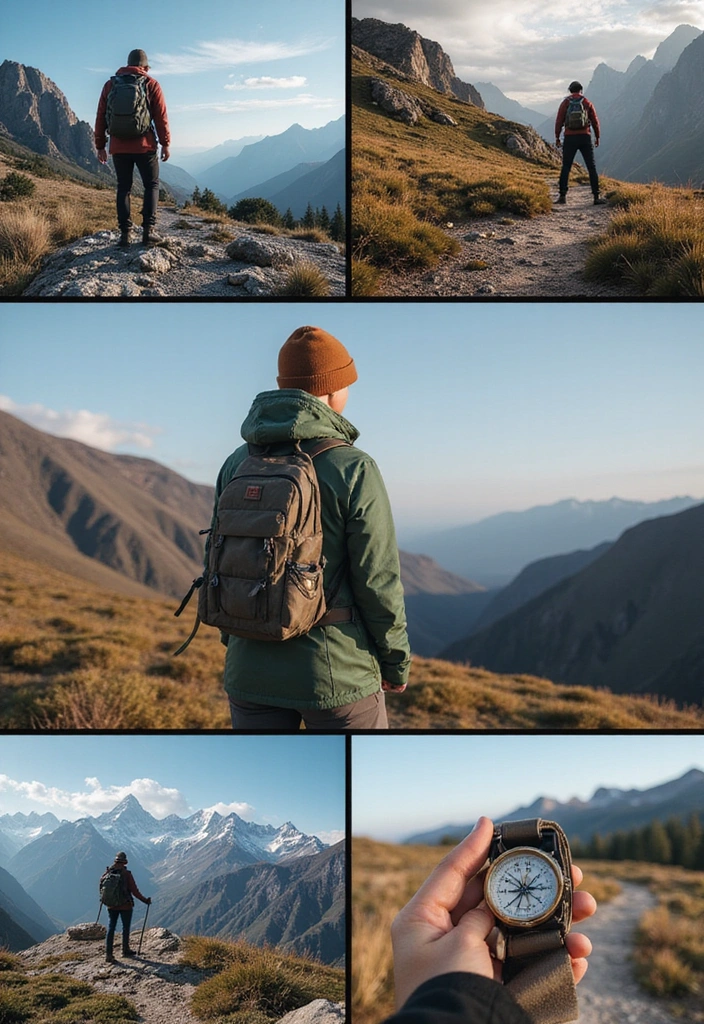
The journey doesn’t end once you’ve mastered compass basics.
There’s always more to learn, new terrains to explore, and fresh skills to develop. Embrace every outing as a chance to grow and improve your navigation skills. Consider these tips for the future:
– **Keep Practicing**: Regularly take your compass on adventures, even if it’s just a walk in the park. For reliable navigation, try the Silva Ranger Compass. Its durable design and accuracy make it an excellent companion for honing your skills.
– **Explore New Areas**: Challenge yourself by navigating unfamiliar terrains to enhance your skills further. A great way to get started is with a 12pcs Orienteering Compass Set. This waterproof set is perfect for hiking, backpacking, and camping, providing everything you need to feel confident in new environments.
– **Share Your Knowledge**: Teach friends or family what you’ve learned to spread the joy of orienteering. You might find it helpful to have a Compass Navigation Guide Book on hand to reference important techniques and tips. This guide is particularly useful for beginners and can spark meaningful discussions about navigation.
Every compass journey can be a new adventure waiting to be discovered!
Conclusion
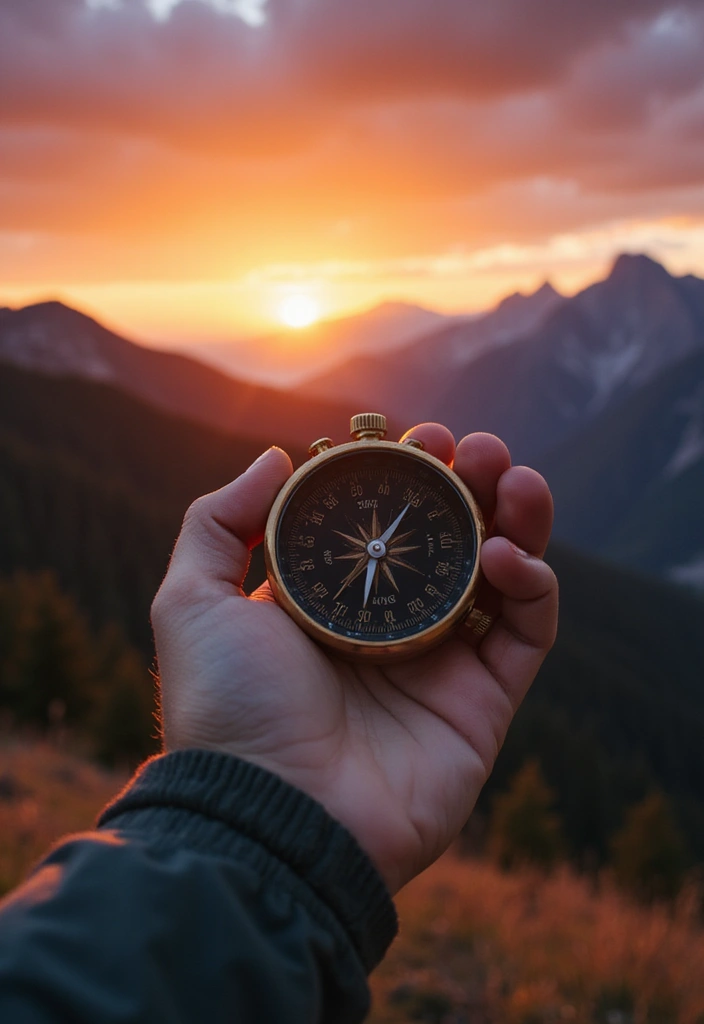
Mastering compass basics opens a world of outdoor fun and exploration!
From setting bearings and using maps to embracing technology and night navigation, each skill adds depth to your adventure. Remember, the most important part is to get out there and enjoy every moment. Happy navigating, and may your compass always guide you toward new adventures!
Note: We aim to provide accurate product links, but some may occasionally expire or become unavailable. If this happens, please search directly on Amazon for the product or a suitable alternative.
This post contains Amazon affiliate links, meaning I may earn a small commission if you purchase through my links, at no extra cost to you.
